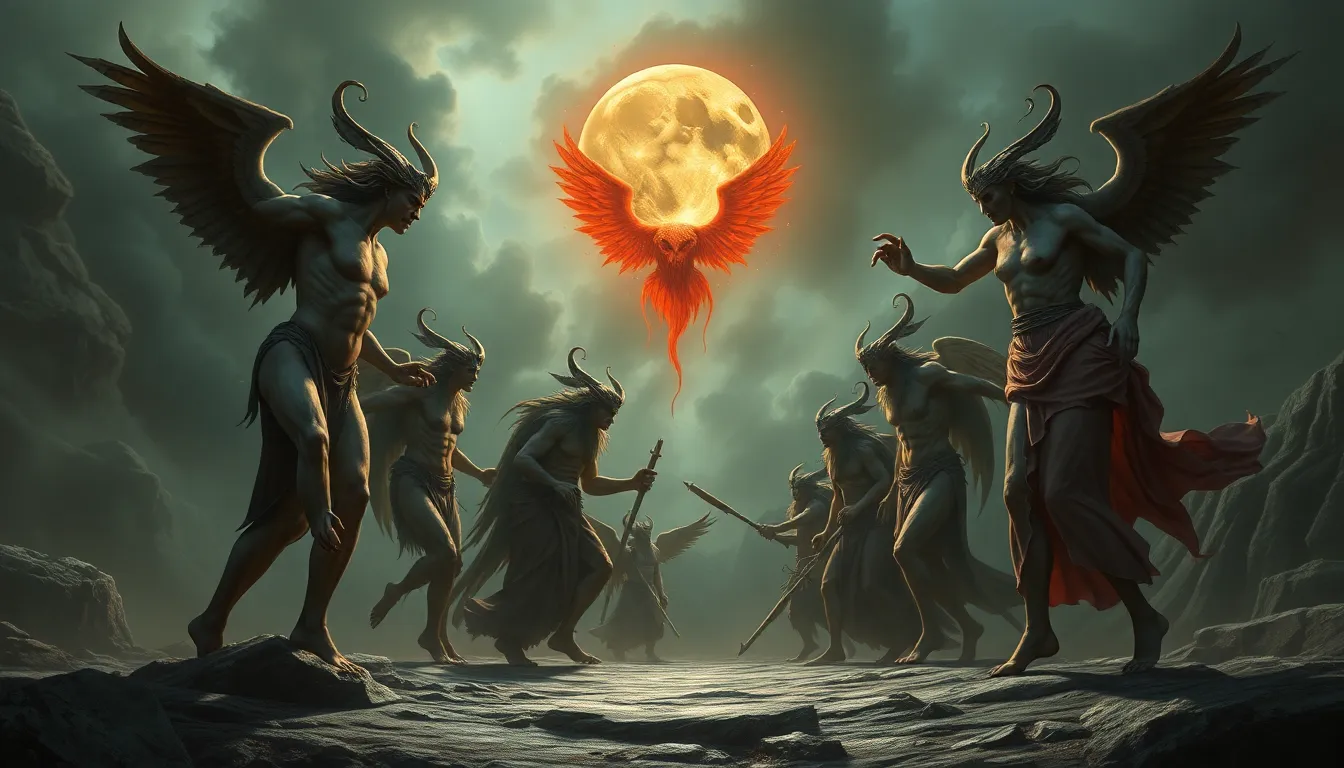The Transformation of the Furies: From Monsters to Protectors
I. Introduction
The Furies, also known as the Erinyes, are formidable figures in ancient Greek mythology. They are often depicted as vengeful deities who punish wrongdoers, particularly those who have committed familial offenses such as murder or betrayal. Originating from the blood of Gaia, the Earth, spilled during the castration of Uranus, their narrative is steeped in themes of justice, vengeance, and the darker aspects of human nature.
This article aims to explore the evolution of the Furies’ role within culture and society, tracing their journey from monstrous avengers to complex protectors who embody justice and moral accountability.
II. Historical Context of the Furies
In ancient Greek mythology, the Furies played a pivotal role as avengers of wrongdoing. They were often depicted as fearsome women with serpent hair, bloodshot eyes, and an insatiable thirst for retribution. Their primary function was to enforce justice, ensuring that those who committed heinous acts faced dire consequences. The Furies were particularly associated with the following:
- Retribution for murder, especially familial murder.
- Enforcement of oaths and societal laws.
- Protection of the weak against oppression.
As embodiments of vengeance, the Furies were feared and respected, serving as a moral compass within a society that sought to uphold justice through retribution.
III. The Furies in Classical Literature
The portrayal of the Furies in classical literature reflects their dual nature. In Aeschylus’ “Oresteia,” the Furies are central to the narrative, highlighting their role as agents of vengeance. They pursue Orestes for avenging his father’s murder, embodying the relentless pursuit of justice. However, as the play progresses, their character evolves:
- Initially, they appear as terrifying figures, instilling fear in those who encounter them.
- They later transition into protectors of societal order, demonstrating the complexity of their roles.
This duality illustrates the Furies as both terrifying and righteous, reflecting the intricate balance between justice and vengeance in human society.
IV. Cultural Shifts and the Reinterpretation of the Furies
Throughout history, societal values and beliefs regarding justice and vengeance have shifted. As concepts of morality evolved, so too did the interpretation of the Furies. In modern contexts, several factors have contributed to this reinterpretation:
- Changes in views on justice, moving from a purely retributive model to a more restorative one.
- Influence of feminist movements, which have redefined the narrative surrounding female power and rage.
These shifts have recontextualized the Furies, transforming them from mere symbols of vengeance into complex figures representing the struggle for justice and accountability.
V. The Furies in Modern Media
In contemporary literature, film, and television, the Furies are increasingly represented as protective figures rather than mere avengers. This transformation reflects a broader cultural acknowledgment of their multifaceted nature. Some notable examples include:
- Literature: In modern novels, the Furies often appear as guardians of justice, helping protagonists confront their moral dilemmas.
- Film and Television: In shows like “American Horror Story” and movies like “The Others,” characters inspired by the Furies symbolize the struggle against injustice and oppression.
These representations highlight the Furies’ protective role, emphasizing their significance in contemporary narratives about morality and justice.
VI. Psychological and Symbolic Interpretations
The Furies also serve as potent symbols of rage, justice, and the female experience. Their transformation from monstrous figures to complex protectors speaks to deeper psychological and symbolic interpretations:
- Rage: The Furies embody legitimate anger in response to injustice, particularly in contexts where traditional systems fail.
- Justice: They symbolize the quest for accountability and moral resolution in a chaotic world.
- The Female Experience: Their character arc resonates with modern discussions about women’s rights and empowerment, representing the reclamation of rage as a force for good.
This evolution underscores their relevance in discussions about justice and societal change, reflecting ongoing struggles against oppression.
VII. The Role of the Furies in Contemporary Discussions of Justice
In today’s socio-political context, the Furies are often invoked in conversations about accountability and moral justice. Their protective role resonates strongly with various movements advocating for social justice, including:
- The #MeToo movement, which seeks accountability for sexual violence.
- Activism against systemic racism and police brutality, where calls for justice echo the Furies’ relentless pursuit of wrongdoers.
- Environmental justice movements, emphasizing the need for accountability in the face of ecological destruction.
Their legacy as protectors reinforces the importance of seeking justice and holding individuals accountable for their actions, reflecting a broader societal demand for moral integrity.
VIII. Conclusion
In conclusion, the transformation of the Furies from monsters to protectors illustrates a significant evolution in their role within mythology and society. Once feared avengers of wrongdoing, they have emerged as complex figures representing justice, accountability, and the righteous anger of the marginalized. As we continue to grapple with issues of moral justice and societal change, the Furies remain a powerful symbol of the ongoing struggle for justice in contemporary culture.
Their relevance endures, reminding us that the pursuit of justice is not merely a matter of punishment but also a call for understanding, healing, and protection for those who have been wronged.




